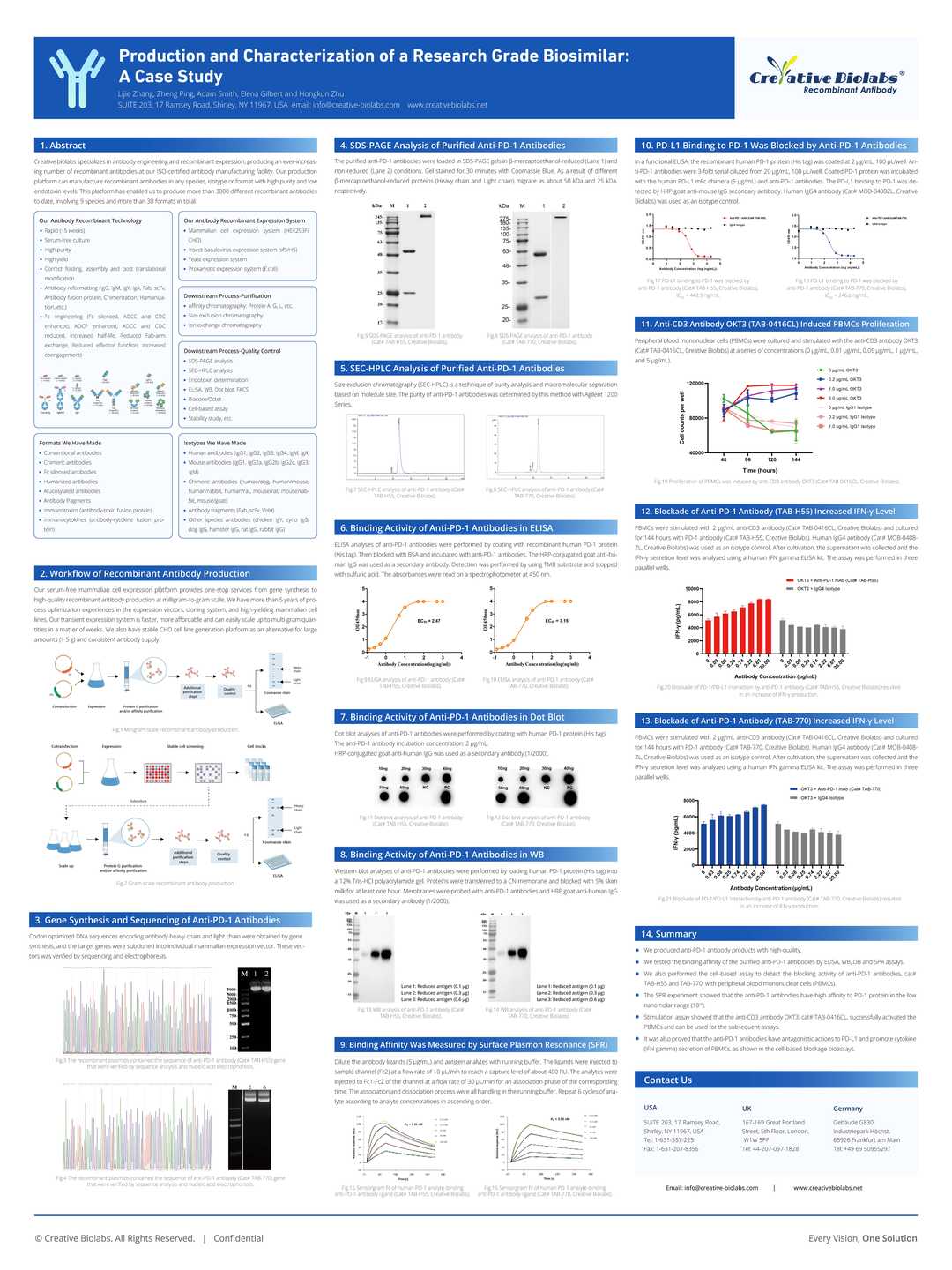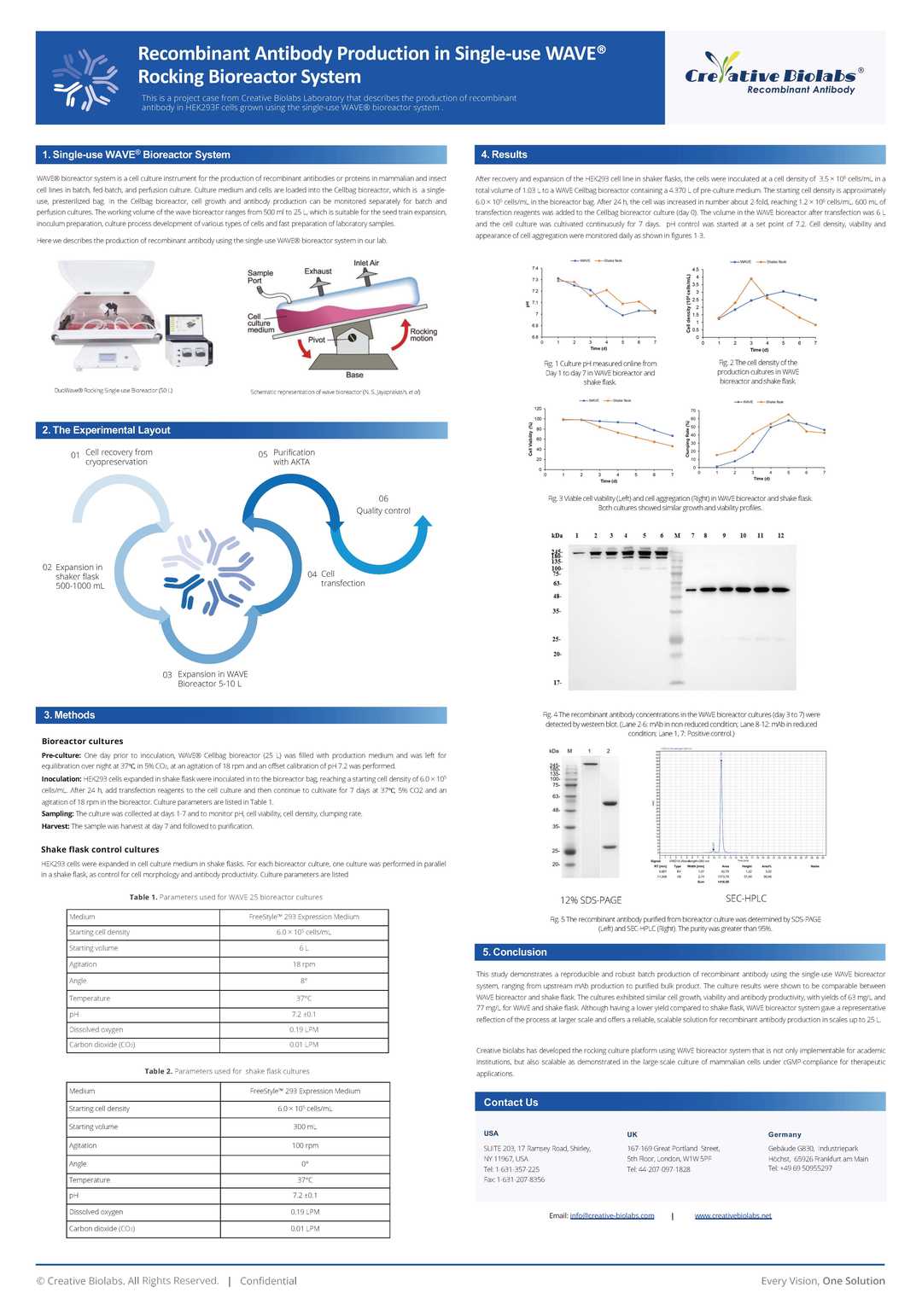Human Anti-SARS-CoV-2 S Recombinant Antibody (VS3-CJ1131)
CAT#: VS3-CJ1131
This product is a human antibody that recognizes SARS-CoV-2 S1 protein or SARS-CoV-2 S-RBD protein.
Specifications
- Host Species
- Human
- Type
- Human IgG1
- Specificity
- SARS-CoV-2 S1 protein or SARS-CoV-2 S-RBD protein
- Species Reactivity
- SARS-CoV-2
- Applications
- ELISA
- Conjugate
- Unconjugated
Product Property
- Purity
- >95% as determined by SDS-PAGE
- Format
- Liquid
- Concentration
- 1 mg/mL (lot specific)
- Buffer
- 0.01M PBS, pH 7.4.
- Storage
- Store at 4°C for short term. Aliquot and store at -20°C for long term. Avoid repeated freeze/thaw cycles.
- Shipping
- Shipped at 4°C
Applications
- Application Notes
- This antibody has been tested for use in ELISA (Use at an assay dependent dilution).
Target
- Alternative Names
- Spike glycoprotein; GU280_gp02
- Gene ID
- 43740568
- UniProt ID
- P0DTC2
- Sequence Similarities
- Belongs to the betacoronaviruses spike protein family.
- Cellular Localization
- Host cell membrane, Host membrane, Membrane, Viral envelope protein, Virion
- Post Translation Modifications
- The cytoplasmic Cys-rich domain is palmitoylated. Palmitoylated spike proteins drive the formation of localized ordered cholesterol and sphingo-lipid-rich lipid nanodomains in the early Golgi, where viral budding occurs.
Specific enzymatic cleavages in vivo yield mature proteins. The precursor is processed into S1 and S2 by host furin or unknown proteases to yield the mature S1 and S2 proteins (PubMed:32362314, PubMed:32703818, PubMed:34159616, PubMed:34561887, PubMed:32155444).
Processing between S2 and S2' occurs either by host CTSL in endosomes (PubMed:32221306, PubMed:33465165, PubMed:34159616), or by host TMPRSS2 at the cell surface (PubMed:32142651).
Both cleavages are necessary for the protein to be fusion competent (PubMed:32703818, PubMed:34159616, PubMed:34561887).
Cell surface activation allows the virus to enter the cell despite inhibition of the endosomal pathway by hydroxychloroquine (PubMed:33465165).
The polybasic furin cleavage site is absent in SARS-CoV S (PubMed:32155444, PubMed:32362314, PubMed:33465165).
It increases the dependence on TMPRSS2 expression by SARS-CoV-2 (PubMed:33465165).
D614G substitution would enhance furin cleavage at the S1/S2 junction (PubMed:33417835).
Highly decorated by heterogeneous N-linked glycans protruding from the trimer surface (PubMed:32075877, PubMed:32155444, PubMed:32929138).
Highly glycosylated by host both on S1 and S2 subunits, occluding many regions across the surface of the protein (PubMed:32366695, PubMed:32363391, PubMed:32929138).
Approximately 40% of the protein surface is shielded from antibody recognition by glycans, with the notable exception of the ACE2 receptor binding domain (PubMed:32929138).
O-glycosylated by host GALNT1 at the end of S1. This could reduce the efficiency of S1/S2 cleavage.
- Protein Refseq
- YP_009724390.1
- Function
- Spike protein S1:
Attaches the virion to the cell membrane by interacting with host receptor, initiating the infection. The major receptor is host ACE2 (PubMed:32142651, PubMed:33607086, PubMed:32155444).
When S2/S2' has been cleaved, binding to the receptor triggers direct fusion at the cell membrane (PubMed:34561887).
When S2/S2' has not been cleaved, binding to the receptor results in internalization of the virus by endocytosis leading to fusion of the virion membrane with the host endosomal membrane (PubMed:32221306, PubMed:32075877).
Alternatively, may use NRP1/NRP2 (PubMed:33082294, PubMed:33082293) and integrin as entry receptors (PubMed:35150743).
The use of NRP1/NRP2 receptors may explain the tropism of the virus in human olfactory epithelial cells, which express these molecules at high levels but ACE2 at low levels (PubMed:33082293).
The stalk domain of S contains three hinges, giving the head unexpected orientational freedom (PubMed:32817270).
Spike protein S2:
Precursor of the fusion protein processed in the biosynthesis of the S protein and the formation of virus particle. Mediates fusion of the virion and cellular membranes by functioning as a class I viral fusion protein. Contains two viral fusion peptides that are unmasked after cleavage. The S2/S2' cleavage occurs during virus entry at the cell membrane by host TMPRSS2 (PubMed:32142651) or during endocytosis by host CSTL (PubMed:32703818, PubMed:34159616).
In either case, this triggers an extensive and irreversible conformational change leading to fusion of the viral envelope with the cellular cytoplasmic membrane, releasing viral genomic RNA into the host cell cytoplasm (PubMed:34561887).
Under the current model, the protein has at least three conformational states: pre-fusion native state, pre-hairpin intermediate state, and post-fusion hairpin state. During fusion of the viral and target cell membranes, the coiled coil regions (heptad repeats) adopt a trimer-of-hairpins structure and position the fusion peptide in close proximity to the C-terminal region of the ectodomain. Formation of this structure appears to promote apposition and subsequent fusion of viral and target cell membranes.
Spike protein S2':
Subunit of the fusion protein that is processed upon entry into the host cell. Mediates fusion of the virion and cellular membranes by functioning as a class I viral fusion protein. Contains a viral fusion peptide that is unmasked after S2 cleavage. This cleavage can occur at the cell membrane by host TMPRSS2 or during endocytosis by host CSTL (PubMed:32703818, PubMed:34159616).
In either case, this triggers an extensive and irreversible conformational change that leads to fusion of the viral envelope with the cellular cytoplasmic membrane, releasing viral genomic RNA into the host cell cytoplasm (PubMed:34561887).
Under the current model, the protein has at least three conformational states: pre-fusion native state, pre-hairpin intermediate state, and post-fusion hairpin state. During fusion of the viral and target cell membranes, the coiled coil regions (heptad repeats) adopt a trimer-of-hairpins structure and position the fusion peptide in close proximity to the C-terminal region of the ectodomain. Formation of this structure appears to promote apposition and subsequent fusion of viral and target cell membranes.
Customer Review
There are currently no Customer reviews or questions for VS3-CJ1131. Click the button above to contact us or submit your feedback about this product.
Submit Your Publication
Published with our product? Submit your paper and receive a 10% discount on your next order! Share your research to earn exclusive rewards.
Downloadable Resources
Download resources about recombinant antibody development and antibody engineering to boost your research.
Product Notes
This is a product of Creative Biolabs' Hi-Affi™ recombinant antibody portfolio, which has several benefits including:
• Increased sensitivity
• Confirmed specificity
• High repeatability
• Excellent batch-to-batch consistency
• Sustainable supply
• Animal-free production
See more details about Hi-Affi™ recombinant antibody benefits.
Datasheet
MSDS
COA
Certificate of Analysis LookupTo download a Certificate of Analysis, please enter a lot number in the search box below. Note: Certificate of Analysis not available for kit components.
Secondary Antibody
- CAT
- Product Name
Recommended Dilution Buffer
- CAT
- Product Name
See other products for "SARS-CoV-2 S"
Select a product category from the dropdown menu below to view related products.
| CAT | Product Name | Application | Type |
|---|---|---|---|
| ZG-0626U | Human Anti-SARS-CoV-2 S Recombinant Antibody (clone H6) | ELISA, GICA | Chimeric (mouse/human) IgG2, κ |
| VS-0322-LC26 | Human Anti-SARS-CoV-2 S Recombinant Antibody (clone 2B7) | ELISA | Human IgG1 |
| VS7-0425-WR823 | Mouse Anti-SARS-CoV-2 S Recombinant Antibody (clone 03FC) | WB, ELISA | Mouse IgG |
| VS7-0425-WR824 | Mouse Anti-SARS-CoV-2 S Recombinant Antibody (clone 04FC) | WB, ELISA | Mouse IgG |
| VS7-0425-WR825 | Mouse Anti-SARS-CoV-2 S Recombinant Antibody (clone 05FC) | WB, ELISA | Mouse IgG |
| CAT | Product Name | Application | Type |
|---|---|---|---|
| VS-0322-LC30 | Human Anti-SARS-CoV-2 S Recombinant Antibody (clone h8A5), hIgM | ELISA, Neut | Human IgM |
| CAT | Product Name | Application | Type |
|---|---|---|---|
| VS3-WK1511 | Human Anti-SARS-CoV-2 S Recombinant Antibody (VS3-WK1511) | WB, ELISA | Human IgG |
| VS3-WK1512 | Human Anti-SARS-CoV-2 S Recombinant Antibody (VS3-WK1512) | WB, ELISA | Human IgM |
| VS3-WK1539 | Human Anti-SARS-CoV-2 S Recombinant Antibody (clone BSM01) | WB, ELISA | Human IgM |
| VS3-WK1542 | Human Anti-SARS-CoV-2 S Recombinant Antibody (clone SG01) | WB, ELISA | Human IgG |
| CAT | Product Name | Application | Type |
|---|---|---|---|
| VS3-WK1530 | Human Anti-SARS-CoV-2 S Recombinant Antibody (clone S1) | WB, ELISA | Humanized IgG |
| VS3-WK1531 | Human Anti-SARS-CoV-2 S Recombinant Antibody (clone S1a) | ELISA | Humanized IgG1 |
| VS3-WK1532 | Human Anti-SARS-CoV-2 S Recombinant Antibody (clone BS01) | WB, ELISA | Humanized IgG |
| VS3-WK1533 | Human Anti-SARS-CoV-2 S Recombinant Antibody (clone BS02) | WB, ELISA | Humanized IgG |
| VS3-WK1534 | Human Anti-SARS-CoV-2 S Recombinant Antibody (clone BS03) | WB, ELISA | Humanized IgG |
| CAT | Product Name | Application | Type |
|---|---|---|---|
| VS-0724-YC1525 | AbPlus™ Anti-SARS-CoV-2 S Magnetic Beads (VS-0724-YC1525) | IP, Protein Purification |
Popular Products

Application: Neut, ELISA, IF, IP, FuncS, FC, ICC

Application: Neut, ELISA, IF, IP, FuncS, FC, ICC

Application: IF, IP, Neut, FuncS, ELISA, FC, WB
-2-1.png)
Application: IP, IF, FuncS, FC, Neut, ELISA, IHC

Application: ELISA, SPR, Inhib, FuncS

Application: ELISA, FC, WB, FuncS

Application: ELISA, IHC, FC, IP, IF, FuncS

Application: ELISA, FC, Neut, Inhib
For research use only. Not intended for any clinical use. No products from Creative Biolabs may be resold, modified for resale or used to manufacture commercial products without prior written approval from Creative Biolabs.
This site is protected by reCAPTCHA and the Google Privacy Policy and Terms of Service apply.

















